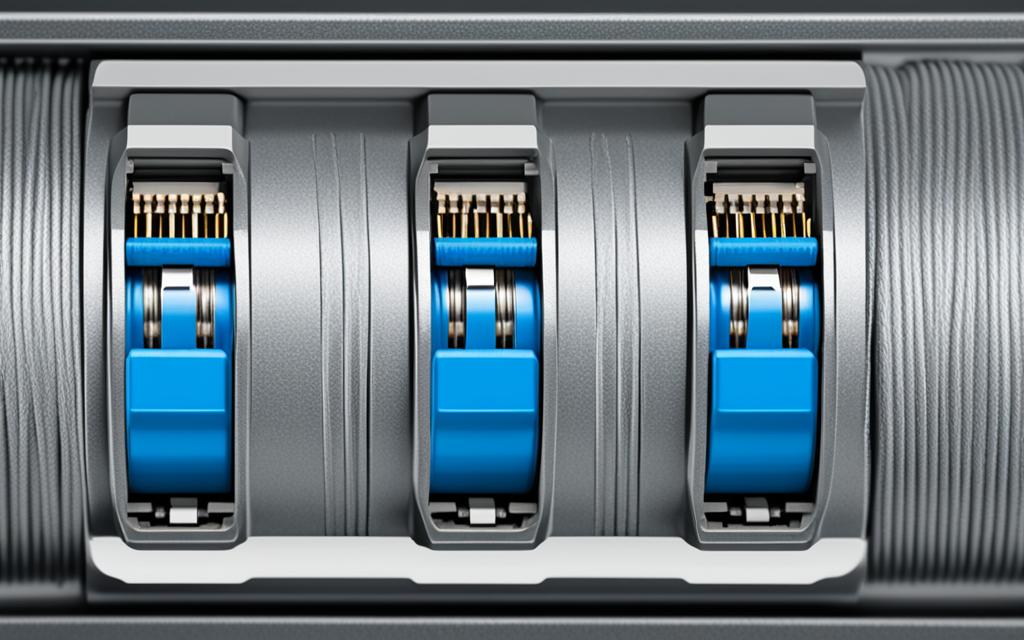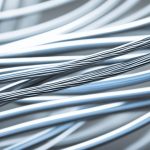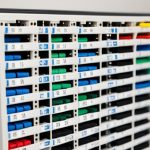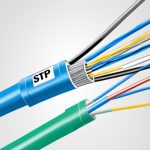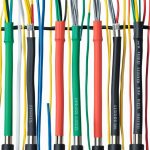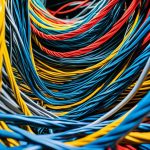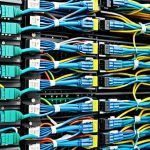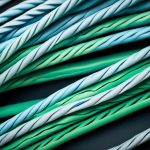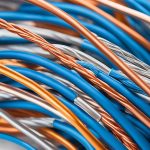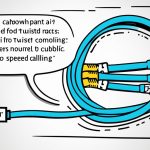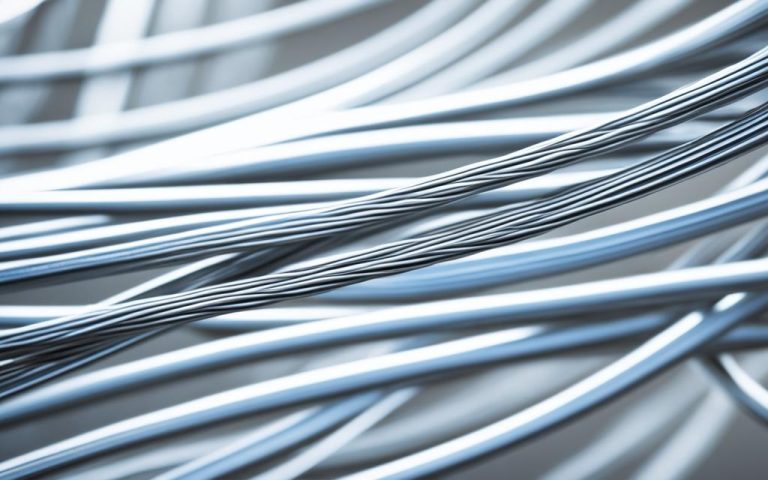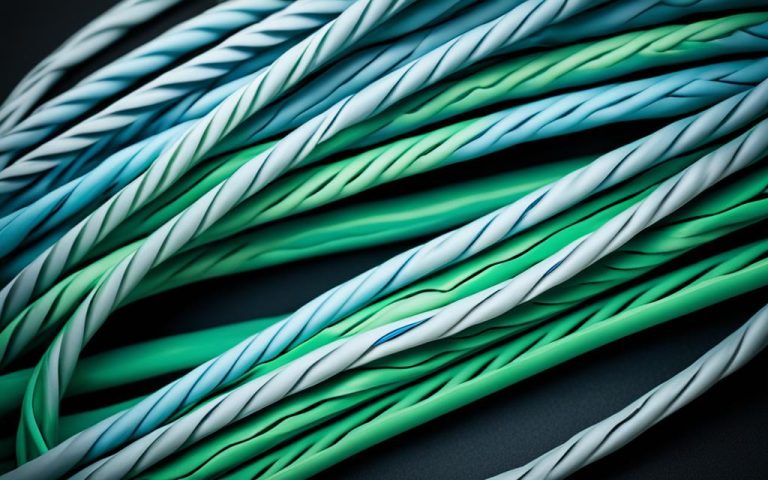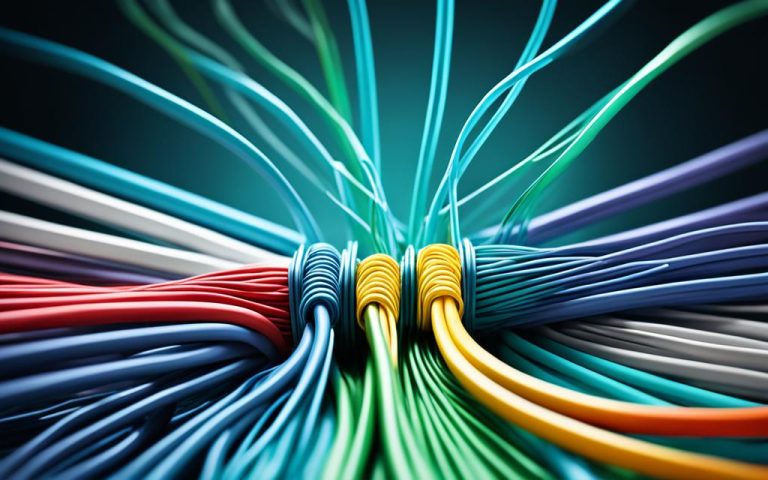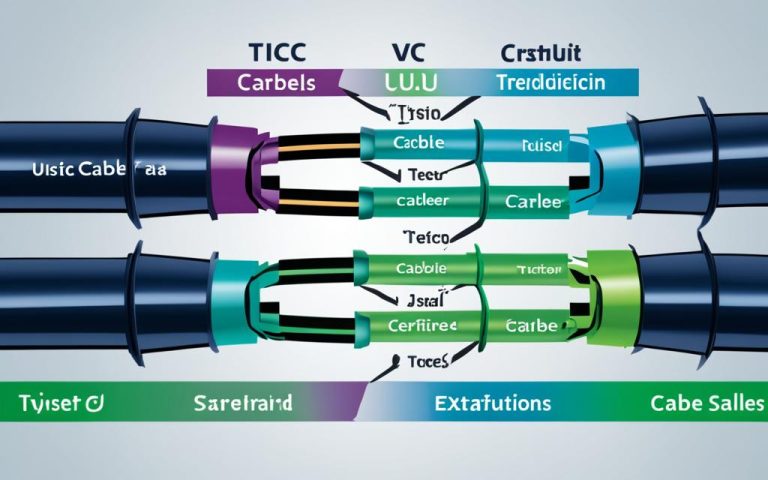In today’s fast-paced digital world, reliable and efficient network connectivity is crucial for businesses and individuals alike. And when it comes to choosing the right cables for your network infrastructure, the debate between shielded and unshielded twisted pair cables has sparked considerable discussion.
Shielded twisted pair (STP) and unshielded twisted pair (UTP) cables both have their merits and drawbacks, but understanding the differences between these two options is essential to ensure optimal performance and functionality.
In this article, we will delve deep into the world of shielded and unshielded twisted pair cables, exploring their characteristics, advantages, and applications. By the end of this article, you will have a clear understanding of the shielded vs. unshielded debate and be equipped with the knowledge to make an informed decision for your network infrastructure.
Understanding Shielded Twisted Pair (STP) Cables
Shielded twisted pair (STP) cables are an essential component in cabling systems designed to minimize electromagnetic interference and ensure reliable signal transmission. By employing a conducting shield, these cables offer enhanced protection against external noise, making them a popular choice in environments with high levels of electromagnetic interference.
The effectiveness of the shield in STP cables depends on various factors. The shield material, thickness, and design play a crucial role in determining the cable’s ability to block electromagnetic interference. Additionally, the frequency of the transmitted signals, the distance from the noise source, and the presence of any shield discontinuity can also impact shield effectiveness.
Proper grounding practices are vital in an STP cabling system to maximize the shield’s performance. The shield should be connected to a reliable ground point to provide an effective pathway for dissipating unwanted electrical currents and electromagnetic fields.
There are different types of STP cables available, each with its particular design features. Some STP cables feature a thick braided shield, providing robust protection against electromagnetic interference. Others utilize a thin outer foil shield, which offers a more cost-effective option. It’s crucial to adhere to strict installation guidelines to prevent damage to the shield during cable deployment.
Overall, shielded twisted pair cables are an excellent choice for applications where electromagnetic interference poses a potential threat to signal integrity. Their ability to effectively block external noise makes them suitable for demanding environments, such as industrial settings, data centers, and installations near power lines or other electromagnetic noise sources.
| Factors | Impact on Shield Effectiveness |
|---|---|
| Shield Material | Determines the shield’s conductivity and ability to block electromagnetic interference. |
| Shield Thickness | A thicker shield can provide stronger protection against external noise. |
| Frequency | The shield’s effectiveness may vary depending on the frequency of the transmitted signals. |
| Distance from Noise Source | Greater distances from the noise source can reduce the impact of electromagnetic interference. |
| Shield Discontinuity | Any breaks or gaps in the shield can compromise its ability to block electromagnetic interference. |
Image:
Exploring Unshielded Twisted Pair (UTP) Cables
Unshielded twisted pair (UTP) cables offer a reliable and cost-effective solution for network installations. Unlike shielded cables, UTP cables do not rely on physical shielding to block interference. Instead, they employ balancing and filtering techniques to cancel out noise on the two conductors, ensuring optimal signal integrity.
UTP cables have evolved over the years, with different types available to cater to various needs. These cables are characterized by their lightweight and flexible design, making them easy to install and maintain. Additionally, UTP cables are known for their affordability, making them a popular choice in both residential and commercial settings.
In environments with minimal electromagnetic noise, unshielded twisted pair cables perform exceptionally well. The balancing and filtering techniques effectively minimize interference, allowing for reliable data transmission and consistent performance. However, it’s important to note that UTP cables may not be suitable for highly noise-prone environments where shielded cables provide superior protection against electromagnetic interference.
Advantages of Unshielded Twisted Pair (UTP) Cables:
- Cost-effective solution for network installations
- Lightweight and flexible design
- Easy to install and maintain
- Reliable performance in environments with minimal electromagnetic noise
| Advantages | Considerations | |
|---|---|---|
| UTP Cables | 1. Cost-effective 2. Lightweight and flexible 3. Easy to install and maintain 4. Reliable performance in low noise environments |
1. Vulnerable to electromagnetic noise in high noise environments 2. Limited shielding capabilities |
| STP Cables | 1. Enhanced protection against electromagnetic interference 2. Suitable for high noise environments |
1. Higher cost 2. Less flexibility 3. More complex installation requirements |
“UTP cables provide a cost-effective solution for network installations, offering reliable performance in low noise environments.”
Overall, unshielded twisted pair cables are an excellent choice for network installations where electromagnetic noise is minimal. Their affordability, flexibility, and ease of installation make them a popular option for various applications. However, in high noise environments, it may be necessary to implement shielding solutions, such as shielded twisted pair (STP) cables, to ensure optimal signal integrity.

Comparing STP and UTP Performance in EMC Testing
EMC testing plays a crucial role in assessing the performance of electronic systems in environments with multiple devices emitting electromagnetic emissions. Historically, shielded twisted pair (STP) cables have been perceived as immune to interference, outperforming unshielded twisted pair (UTP) cables. However, recent regulatory changes in various countries have necessitated stringent electromagnetic compatibility (EMC) requirements for all cabling systems, including both STP and UTP.
Contrary to the assumption that only STP cables are suitable for EMC-sensitive applications, EMC testing has shown that well-designed UTP cabling systems can effectively pass all required tests and meet the prescribed EMC standards. This challenges the traditional belief that STP cables are the sole solution for mitigating electromagnetic interference.
EMC Testing: Evaluating System Performance
EMC testing evaluates the capability of electronic systems to function properly in the presence of electromagnetic emissions. It involves subjecting the systems to a range of tests to assess their immunity to interference and the ability to perform without degrading the performance of other nearby devices.
“EMC testing ensures the hardware and software components of electronic systems can coexist harmoniously, minimizing the risk of electromagnetic interference.”
In the past, STP cables were considered the go-to solution for addressing EMC concerns due to their physical shielding capabilities. However, advancements in balancing and filtering techniques in UTP cables have significantly improved their ability to tolerate and minimize electromagnetic noise.
STP vs. UTP: Performance in EMC Testing
When it comes to EMC testing, both STP and UTP cables undergo rigorous examination to ensure they meet the prescribed EMC standards. By subjecting both cable types to the same tests, the evaluation focuses on their performance and ability to maintain signal integrity in real-world EMC scenarios.
| STP Cables | UTP Cables | |
|---|---|---|
| EMC Performance | Superior protection against electromagnetic interference due to physical shielding. | More reliant on balancing and filtering techniques, but effective in mitigating interference. |
| Immunity Testing | Traditionally considered immune to interference and exempt from specific immunity testing regulations. | Recent regulatory changes have required UTP systems to adhere to strict EMC standards. |
| Signal Integrity | Shielding provides enhanced signal integrity, especially in environments with high electromagnetic noise. | Advanced balancing and filtering techniques ensure reliable signal integrity under normal operating conditions. |
Despite the physical shielding advantage of STP cables, well-designed UTP cabling systems have proven their ability to meet the demanding EMC standards. These test results dispel the notion that only STP cables are suitable for applications involving electromagnetic compatibility.
It’s important to note that the effectiveness of both cable types heavily relies on proper installation practices, adherence to wiring standards, and consideration of the surrounding electromagnetic environment. By selecting cables that align with the specific requirements of the system and EMC standards, it is possible to achieve optimal performance and ensure electromagnetic compatibility.
Cat6a Cables: The Need for Speed and Reliability
Cat6a cables are the go-to choice for high-speed performance and reliable connectivity in structured cabling networks. These cables have become increasingly popular due to their ability to handle data transmission speeds of up to 10Gbps, making them ideal for bandwidth-intensive applications.
Whether you’re involved in video editing, file transfers, or virtual reality experiences, Cat6a cables deliver the speed and reliability you need to ensure seamless operations. Their impressive data transmission capabilities enable smooth and lag-free data transfer, providing a superior user experience.
One of the key advantages of Cat6a cables is their backward compatibility with Cat5e and Cat6. This means that you can upgrade your existing network infrastructure without having to replace everything. This compatibility allows for a smooth transition to higher speeds without significant disruptions or costly overhauls.
“Cat6a cables offer unmatched speed and reliability, providing businesses with the backbone they need for a high-performance network.” – Network Solutions Inc.
Cat6a cables are designed to meet and exceed stringent manufacturing standards. Their durability ensures a long-lasting and reliable network connection that can withstand the demands of modern digital environments. With reliable connectivity, you can eliminate network downtime and maintain uninterrupted productivity.
When it comes to your network’s performance, speed, and reliability are paramount. Cat6a cables deliver on both fronts, making them the ideal choice for organizations that rely on high-speed data transmission and require a stable and dependable network infrastructure.
| Benefits of Cat6a Cables | Features of Cat6a Cables |
|---|---|
|
|
With Cat6a cables, you can confidently power your network with the speed and reliability necessary for today’s demanding digital landscape. Upgrade your infrastructure and experience enhanced data transmission for unparalleled performance.
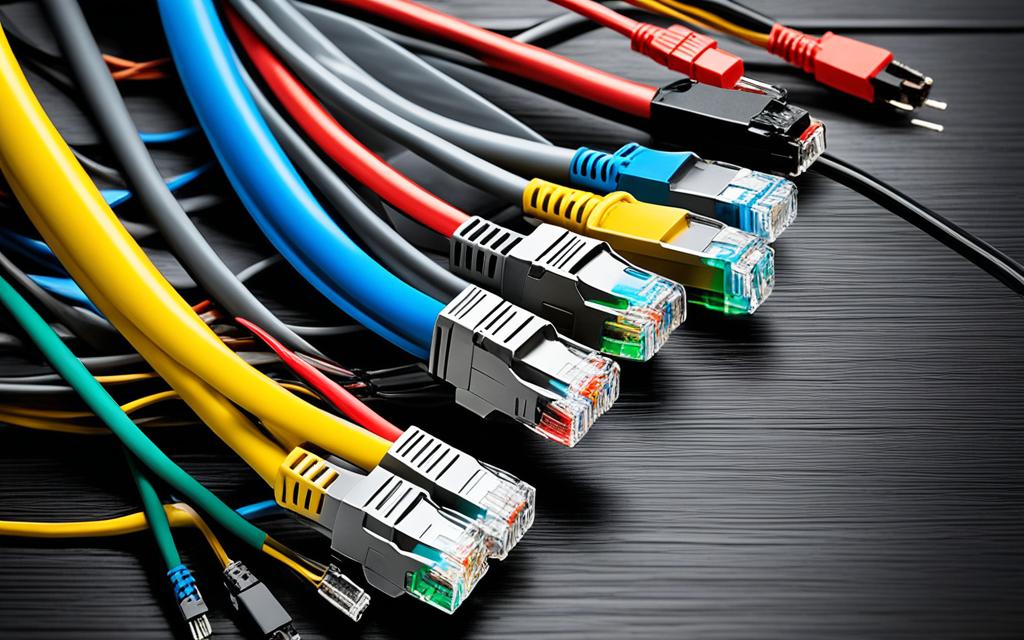
The Importance of Speed and Reliability in Networking
Speed and reliability are vital components of any network infrastructure. Whether you’re running a small business, managing a larger enterprise, or simply seeking to optimize your home network, the smooth and efficient transmission of data is crucial.
In today’s fast-paced world, where businesses rely heavily on digital systems and the demand for high-bandwidth applications continues to grow, having a network that can handle the speed and reliability requirements is essential.
Speed is vital for handling large data transfers, streaming high-definition videos, and running real-time applications. It ensures that your network can handle the demands of modern technologies, providing a seamless user experience without frustrating lags or buffering issues.
Reliability, on the other hand, ensures that your network is consistently accessible and performs consistently without interruptions. It eliminates the risk of downtime, lost productivity, and potential data loss.
By choosing Cat6a cables, you can rest assured that you are investing in a network infrastructure capable of delivering the speed and reliability your operations depend on.
Shielded vs. Unshielded Cat6a: Considering the Trade-Offs
When it comes to Cat6a cables, the decision between shielded and unshielded options involves careful consideration of several factors. Shielded Cat6a cables provide enhanced protection against electromagnetic interference (EMI), ensuring optimal signal integrity even in noisy environments. On the contrary, unshielded Cat6a cables offer a lighter, more flexible, and cost-effective alternative for installations with minimal EMI concerns.
Shielded Cat6a cables are designed with a conductive shield that acts as a barrier against external electrical noise, offering superior EMI protection. This shielding helps maintain data integrity, making them ideal for critical applications in environments prone to high levels of electromagnetic noise.
However, shielded Cat6a cables come with a higher price tag and are thicker and less flexible compared to their unshielded counterparts. The additional cost can be a consideration for budget-conscious projects, and the bulkier size might pose challenges during installation in tight spaces or when routing cables through conduits.
On the other hand, unshielded Cat6a cables provide a lighter and more flexible option that is easier to maneuver during installation, especially in areas with limited space or complex cable paths. They also offer cost advantages, making them attractive for installations without significant EMI concerns.
In optimal conditions, unshielded Cat6a cables can achieve slightly higher speeds due to less signal loss. However, in environments with significant electromagnetic noise, they may be more vulnerable to interference and signal degradation, potentially impacting network performance.
Considering the trade-offs between shielded and unshielded Cat6a, the choice ultimately depends on the specific needs of the installation. If the surrounding environment is susceptible to electromagnetic noise or if data integrity is of utmost importance, shielded Cat6a cables provide the best protection against EMI. However, in scenarios where cost and installation flexibility are key considerations, unshielded Cat6a cables offer a more budget-friendly and versatile solution.
Shielded vs. Unshielded Cat6a Comparison
| Factors | Shielded Cat6a | Unshielded Cat6a |
|---|---|---|
| EMI Protection | Superior | Standard |
| Price | Higher | Lower |
| Flexibility | Less flexible | More flexible |
| Installation Considerations | May require additional space and careful handling | Easier to maneuver and route |
| Evaluation in Noisy Environments | Provides superior signal integrity | Potentially more susceptible to interference |
It’s important to assess the specific requirements of the network installation and weigh the benefits and drawbacks of shielded and unshielded Cat6a cables. Determining the surrounding electromagnetic environment, available budget, and installation constraints will enable you to make an informed decision that meets your network’s needs.
Choosing the Right Cat6a Cable for Your Network
The choice between shielded and unshielded Cat6a cables depends on the specific needs of your network. When considering the right Cat6a cable for your network, factors such as electromagnetic noise, data integrity, installation constraints, and aesthetics should all be taken into account.
Electromagnetic Noise:
In environments with high levels of electromagnetic noise, shielded Cat6a cables are recommended. These cables provide superior protection against interference, ensuring data integrity and minimizing the risk of signal degradation. Shielded Cat6a cables are especially beneficial for networks that handle sensitive or critical data, where data integrity is paramount.
Data Integrity:
For networks that prioritize data integrity, shielded Cat6a cables offer the best solution. The shielding in these cables helps to minimize electromagnetic interference, reducing the chances of data corruption or packet loss. Shielded Cat6a cables provide peace of mind by ensuring that your data transmission remains reliable and consistent.
Installation Constraints:
When considering installation constraints such as tight spaces or the need for flexibility, unshielded Cat6a cables may offer more practicality. These cables are generally lighter and more flexible than their shielded counterparts, making them easier to maneuver and install in challenging environments. Unshielded Cat6a cables can be a cost-effective option without compromising speed and agility.
Aesthetics:
If aesthetics play a role in your network installation, unshielded Cat6a cables are visually more appealing. The absence of shielding makes them sleeker and less bulky, resulting in a cleaner and more streamlined appearance. Unshielded Cat6a cables are often preferred for visible installations, such as office spaces or retail environments where cable management and visual appeal are important.
By considering these factors and the specific requirements of your network, you can make an informed decision when choosing between shielded and unshielded Cat6a cables. Remember to evaluate the level of electromagnetic noise, prioritize data integrity, accommodate installation constraints, and consider the aesthetics of your network. Choosing the right Cat6a cable will ensure optimal performance, reliability, and data transmission for your network infrastructure.
Conclusion
In the ongoing debate between shielded and unshielded twisted pair cables, both options have their advantages and drawbacks. Shielded cables offer superior protection against electromagnetic interference (EMI) but come at a higher cost and reduced flexibility. On the other hand, unshielded cables are lighter, more flexible, and cost-effective, but they may be susceptible to EMI.
When making a decision between shielded and unshielded cables, it is crucial to consider several factors. Installation requirements, budget constraints, and the electromagnetic environment in which the cables will be deployed all play a significant role. By carefully evaluating these aspects, you can make a well-informed decision that aligns with your specific needs.
Ultimately, choosing the right Cat6a cable will unlock the full potential of your network. Cat6a cables offer blazing speed, unwavering reliability, and future-proofed connectivity to the digital world. Whether you prioritize robust EMI protection or require a cost-effective and flexible solution, the Cat6a cables you choose can make a substantial difference in optimizing your network performance.
FAQ
What are the benefits of shielded twisted pair (STP) cables?
STP cables provide enhanced protection against electromagnetic interference, ensuring reliable signal integrity in noisy environments.
How does the shielding of STP cables work?
STP cables employ a conducting shield that reduces the potential for electromagnetic interference. The effectiveness of the shielding depends on factors such as shield material, thickness, distance from the noise source, and grounding practices.
What are the advantages of unshielded twisted pair (UTP) cables?
UTP cables are lightweight, flexible, and cost-effective. They rely on balancing and filtering techniques to minimize interference without physical shielding.
Do UTP cables perform well in environments with electromagnetic noise?
Yes, UTP cables perform well in environments with minimal electromagnetic noise. They have evolved over the years, offering different types for various needs.
Are both STP and UTP cabling systems required to meet strict EMC requirements?
Yes, recent regulatory changes in some countries have required all systems, including STP and UTP cabling systems, to meet strict EMC requirements. EMC testing has shown that well-designed UTP cabling systems can pass all required tests and meet EMC standards.
What are the advantages of Cat6a cables?
Cat6a cables offer high-speed performance and reliable connectivity, with the ability to transmit data at up to 10Gbps. They are ideal for bandwidth-intensive applications and adhere to stringent manufacturing standards for durability.
Which type of Cat6a cable is suitable for environments with electromagnetic interference?
Shielded Cat6a cables provide enhanced protection against electromagnetic interference, ensuring signal integrity even in noisy environments. They are thicker and less flexible compared to unshielded Cat6a cables.
Are unshielded Cat6a cables suitable for environments with minimal electromagnetic interference?
Yes, unshielded Cat6a cables are lighter, more flexible, and cost-effective options for environments with minimal electromagnetic interference. They can offer slightly higher speeds in ideal conditions.
How should I choose between shielded and unshielded Cat6a cables?
The choice between shielded and unshielded Cat6a cables depends on factors like the surrounding environment, budget, and installation requirements. Shielded cables provide superior protection in electromagnetically noisy environments, while unshielded cables offer cost-effective options without compromising speed and agility.
What factors should I consider when choosing the right Cat6a cable for my network?
Consider factors such as the level of electromagnetic noise, mission-critical tasks, installation constraints, and aesthetics when choosing the right Cat6a cable for your network. This ensures data integrity, optimal performance, and future-proofed connectivity.

